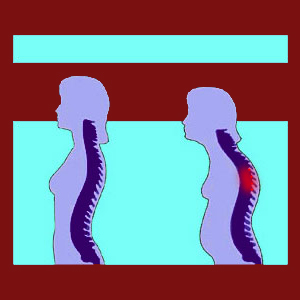
Elderly facet joint pain is one of the more common chronic dorsalgia syndromes that might produce symptoms in the later years of life. Elderly individuals are certainly subject to virtually universally experienced deterioration of the apophyseal joints, sometimes leading them to suffer pain in the affect area(s) of the vertebral column.
Science has learned much about facet joint syndrome, and back pain in general, from the elderly patient demographic. Expectations for symptoms often do not match the age or degree of degeneration suffered by a given individual, causing doctors to question the Cartesian view of facet pain. Many of the truths of elderly facet syndrome are surprising, even to enlightened students of chronic pain.
This fascinating dialog examines the crucial topic of facet joint symptomology in advanced age patients. We will detail why pain might exist and what processes incite symptomology. We will also discuss the typical expressions of elderly facet joint pain and the best therapy options for a full range of symptomatic profiles.
Elderly Facet Joint Pain from Degeneration
Degeneration universally affects the spinal joints, with most deterioration taking place in areas of maximum flexibility, such as the middle to lower cervical spine and lower lumbar region. Degeneration will affect the facet joints in easily distinguished ways, including the drying of the synovial fluid, the breakdown and wearing away of the protective cartilage on the joint surfaces, the accumulation of arthritic bone spurring and debris on and around the joint and the general hypertrophic change of the joint structure.
Most spinal degeneration is asymptomatic, or only mildly symptomatic, and facet joint changes are no exception to this anatomical rule. Only a minority of degenerative conditions will become pathological in the apophyseal joints, leading to pain and possible impingement of spinal nerve roots within the neural foramen.
Scientific evidence clearly shows that facet degeneration continues for life, yet symptoms of facet joint pain are reported in the 40 to 55 age demographic more than any other patient age category. If degeneration was solely responsible of causing pain, then any logical observer would assume that the rate of pain would increase with age, yet this is simply not the case.
Elderly Facet Syndrome Expressions
When pathology does exist in the facet joints of elderly patients, several symptomatic profiles can be expressed:
Localized pain is one of the more common symptoms, with discomfort being linked to movement of the degenerated spinal levels. Most patients cite pain upon flexion of the back, while fewer report pain upon rotation or extension of the back. Pain usually exists on the centerline of the spine and is highly focused in location.
Patients usually complain of general stiffness in the affected areas of the spine. Some elders report that the region does not easily move and that some effort must be made to mobilize it, often bringing on more severe pain. Significant arthritic activity or general hypertrophy of the joint might cause mechanical dysfunction leading to hypermobility or hypomobility.
Facet dysfunction in the elderly might contribute to the development of degenerative spondylolisthesis, hyperkyphosis or hyperlordosis.
Larger osteophytes near the foraminal openings can contribute to neuroforaminal stenosis and the development of compressive neuropathy conditions.
Elderly Facet Joint Pain Management
Symptomatic facet joint treatment is usually the industry standard for elders with any type of back or neck pain. This is simply because the risk of surgical endeavors is greater in older people and the expectation for recuperation is not as optimistic, given the collateral effects of advanced age. Therefore, most elderly patients will be treated with drugs, physical therapy, heat or ice, TENS, chiropractic and other conservative care practices. Elders might be best served by taking a more active role in their care and insisting on natural methods of pain relief to replace the common application of drugs and injections. Pain coaching, acupuncture, physical therapy and chiropractic are all effective options and do not demonstrate the downsides of pharmacological care.
Surgery is usually held in reserve for truly pathological cases of facet joint syndrome where the patient is capable of undergoing a minimally invasive surgical endeavor safely and with a positive prognosis for a complete recovery. In cases where facet joint changes have created structural spinal instability, spinal fusion might be necessary, but this technique should be carefully considered, since it is the most complication-filled technique in the entire surgical treatment sector and involves a great degree of risk to the patient both during and after the procedure.
Facet Joint Pain > Facet Joint Facts > Elderly Facet Joint Pain





